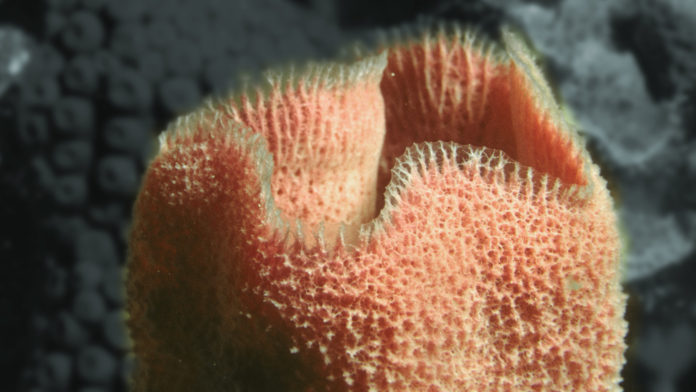If you look all the way down to the very base of the evolutionary tree of animals alive today, you’ll find the most basic creature we know: sponges. Their stationary aquatic lives are a quiet existence, where their hollow and porous bodies take up oxygen and feed on organic matter from the water that filters through them. It would make sense for the Earth’s earliest animals to have looked a bit like sponges.
Unfortunately, we rely on fossils for most of what we know about ancient evolution, and sponges don’t have any of the typical hard parts — like shells or bones — that are usually found in the fossil record.
What they do have is a network of tough protein fibres called spongin that acts as a sort of skeleton. Those fibres can fossilize, showing up as a microscopic tubes branching out in a three-dimensional structure that looks like a bath sponge.
Exactly how far back in the fossil record that sponge-like animals appear is now up for fresh debate.
Possible new evidence could put the earliest fossilized animals as far back as 890 million years ago. Elizabeth Turner, now a professor of Earth sciences at Laurentian University, re-examined limestone specimens she collected from ancient microbial reefs in the Northwest Territories during her graduate studies in the 1990s. She believes they contain fossilized spongin networks.
If she’s right, these would represent the oldest known body-fossil evidence of animals. That would push back the earliest physical evidence of animals by 350 million years.
Her study comparing these structures to those in undisputed body fossils of Phanerozoic sponges and modern day keratosan sponges was published in Nature.
On the surface, these possible animal fossils just look like squiggly lines, but the patterns are a near perfect match to later sponge fossils.
However, not all scientists are convinced and they want to see more evidence.
“It’s such a big claim that you really have to eliminate all the other possibilities,” said Rachel Wood, professor of geoscience at the University of Edinburgh, to Nature News. “Microbes, for example, produce weird and wonderful shapes and forms.”
Wood notes that even crystals can grow in patterns that look similar to those made by living organisms, and they aren’t fossils at all. She also believes a stronger argument could be made with by piecing together information from neighbouring rock slices to make a three-dimensional reconstruction for comparison against spongin structures.
Another a big part of the debate centres around the fact that animals need a certain amount of oxygen in their environments in order to survive. It is believed that the Earth’s early water and air would have been completely devoid of free oxygen to breathe until cyanobacteria evolved and produced oxygen by photosynthesis. It would have taken time to get to the oxygen levels needed to support animal life.
Turner believes that there could have been localized well-oxygenated environments near cyanobacterial communities, even if they were surrounded by a low-oxygen world. A microbial reef next to a cavity or crevice, for example, might have supported sponge-like animals much earlier than broader oxygenation came about. The cyanobacteria themselves would have also been a ready source of organic slime for these early animals to eat.
Indeed, she only found the sponge-like structures in specimens found near reefs built by oxygen-producing cyanobacteria.
“Radical new ideas are generally not fully accepted by the scientific community without vigorous discussion,” said Turner in an article for The Conversation. “I expect lively controversy to ensue. At some point, probably years in the future, a consensus may develop based on further work. Until then, enjoy the debate!”








































